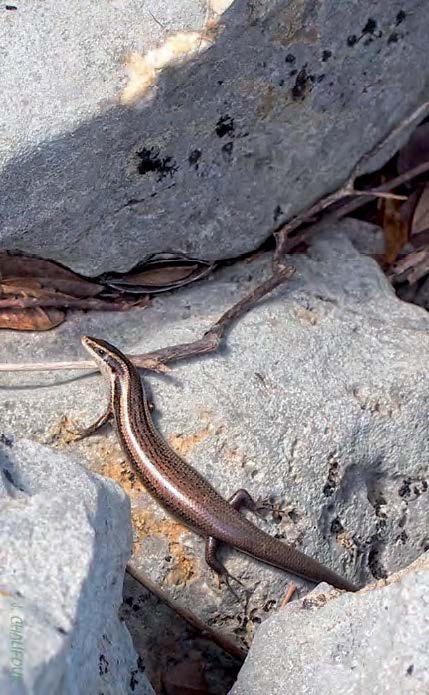There has been much talk lately about the skink, a lizard recently rediscovered on the small island of Tintamare, where they were thought to be extinct. On November 10-15, a team comprising six members of AEVA, an association in Guadeloupe, was financed by the French government to launch a study of the characteristics of this little lizard, which can also be found in La Désirade and the Petite Terre Islands of Guadeloupe. The goal of this group’s first mission is to decide if the skinks in each of these three territories are the same species, whose geographic isolation allowed for their rapid evolution. Thus these small reptiles and their various aspects are being analyzed: their size, eventual signs of disease, their habitat, their predators - they are possible prey for the rats on Tintamare - and their potential difficulty to find the insects on which they feed. All of these parameters will allow for a better understanding of this population, to explain its presence, and identify factors that could be a menace to its existence. The second goal is to capture two complete lizards (including their tails) to serve as models to describe the species at the Museum of Natural History. More recently, from December 14-21, Blair Hodges, professor at the University of Pennsylvania and the leading American specialist of this species, visited the skinks of Tintamare. He was joined by a second professor as part of the study launched by AVEA. The two scientists left with a piece of a tail from a skink, in order to compare its DNA to that of two skinks that were captured on Tintamare and have been part of their museum for over 30 years. Will they determine if this is a new species? That is the question.
The Skink, a lizard of national interest
Skinks enjoy the low walls of Tintamare

















